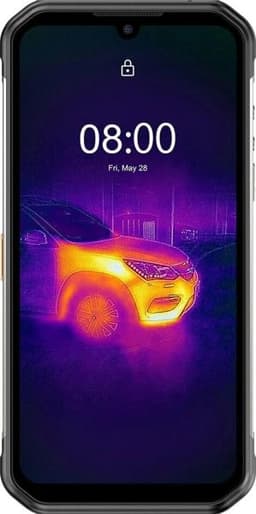- Archive
- Ulefone Armor 11T vs Xiaomi Redmi 9T
Ulefone Armor 11TvsXiaomi Redmi 9T
We compare these two popular phones to help you decide which one fits your needs and budget better.

Quick Stats

Quick Stats
Note: Highlighted specifications show differences between the two devices.
| Metric | Ulefone Armor 11T | Xiaomi Redmi 9T |
|---|---|---|
| Connectivity | #484 Winner | #712 |
| Design | #376 Winner | #812 |
| Display | #811 Winner | #852 |
| Performance | #548 Winner | #709 |
| Battery | #660 Winner | #806 |
| Camera | #420 | #315 Winner |
Note: Lower rank number indicates a better position in category.
No significant specification differences found between these devices.
Ulefone Armor 11T
Strengths
Weaknesses
Xiaomi Redmi 9T
Strengths
No specific pros listed for this device
Weaknesses
No specific cons listed for this device
Ulefone Armor 11T
As a software engineer, father, and tech enthusiast, I was excited to try the Ulefone Armor 11T, a rugged phone that caught my attention due to its FLIR camera and flagship-level specifications. After two months of daily use, I'm sharing my thoughts on this device. The phone's solid build quality is impressive, but it's also quite heavy and thick. The FLIR camera is a useful tool for everyday tasks, revealing temperature differences in various objects. However, the image quality is poor, especially in low light conditions. Despite its 48-megapixel main camera, the photos I took were not up to par. I was disappointed to find that the phone's 5G connectivity didn't work on my device, despite having a 5G data plan and testing it in areas with good coverage. The battery life is excellent, lasting two days or more with heavy use. However, the phone's durability was another letdown - after only two drops, the outer edges were damaged. The camera focus issues were particularly frustrating, especially when using the app for grocery shopping. Compared to my old iPhone SE, scanning barcodes took 10 times longer. As someone who has primarily used iPhones over the past 13 years, I missed the seamless experience of iOS on this Android device. While the user interface has improved significantly since my last Android experience in 2010, I still found myself wanting an iPhone. In conclusion, if you're specifically looking for a rugged phone and know what to expect, the Ulefone Armor 11T might be suitable. However, if you're switching from a regular phone or seeking a similar experience, this device may not be the best choice. My final thoughts: proceed with caution, as the phone's durability and camera performance may not meet your expectations.
Xiaomi Redmi 9T
The Xiaomi Redmi 9T is an entry-level phone that shares many similarities with its counterpart, the Poco M3. However, there are some notable differences that set it apart. The design, for instance, boasts a glossy metallic finish and a splash-proof build, making it a great option for those who want peace of mind. The device also features NFC support, which is not available on the Poco M3. Under the hood, the Redmi 9T sports a Snapdragon 662 chipset, which provides decent performance but falls short in GPU-intensive tasks. This is likely due to the phone's 1080p display, which can be demanding on the processor. Despite this, the device manages to deliver excellent battery life, with our proprietary tests yielding an impressive 150 hours of usage. The cameras on the Redmi 9T are a mixed bag. The 8-megapixel ultra-wide camera is a welcome addition, but its photos lack detail and sharpness. The main camera takes good photos during the day, but struggles in low light conditions. Night mode does improve the quality, but it's still not up to par with other phones in this price range. In conclusion, the Xiaomi Redmi 9T offers a great balance of features for its price. While it may not excel in every department, it makes up for it with its splash-proof build, NFC support, and excellent battery life. For those looking for an entry-level phone that ticks all the right boxes, the Redmi 9T is definitely worth considering.
Need help choosing?
Read our detailed reviews to understand which device is better for your specific needs and budget.
Compare other phones
Explore comparisons between any other phones
Choose two different items to see a detailed comparison of their specifications, performance, and features